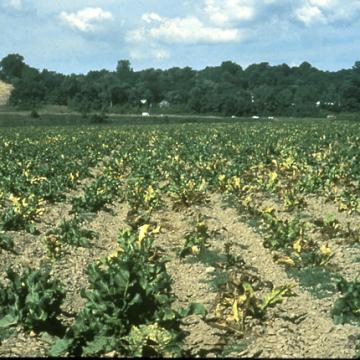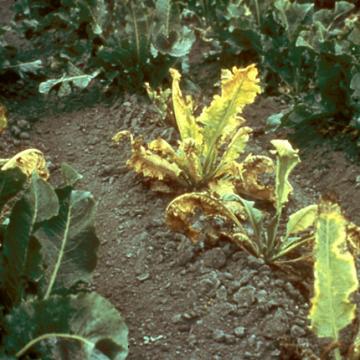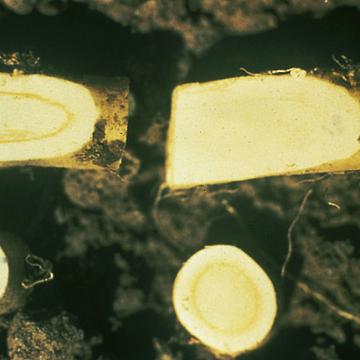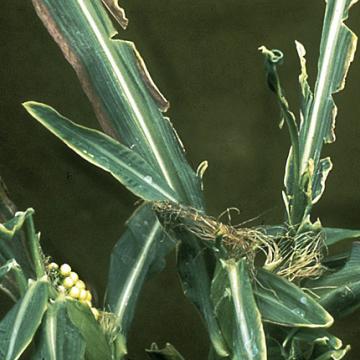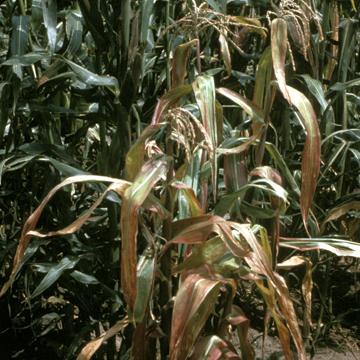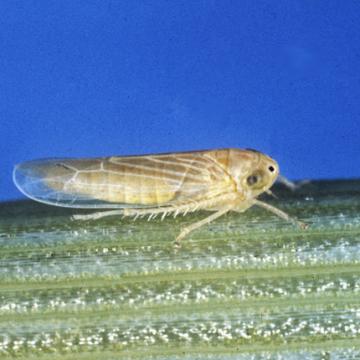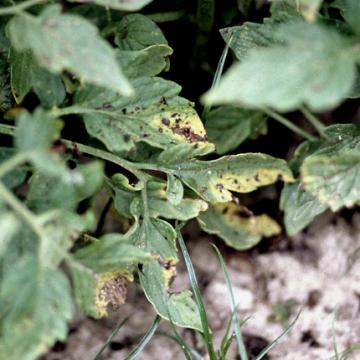DISEASE: Brittle root
HOST: Horseradish
Dying, stunted, yellow to brown horseradish plants.
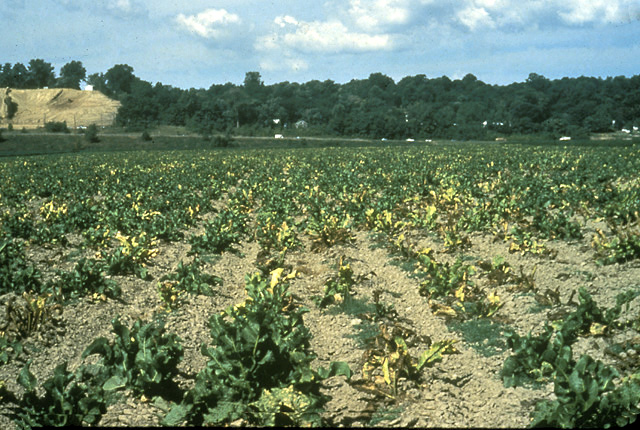
Brittle root | Horseradish
DISEASE: Brittle root
HOST: Horseradish (Armoracia rusticana)
PATHOGEN: Spiroplasma citri
SOURCE: C. Eastman, M. Davis
DISEASE: Brittle root
HOST: Horseradish
Close-up of stunted, yellow horseradish plants.
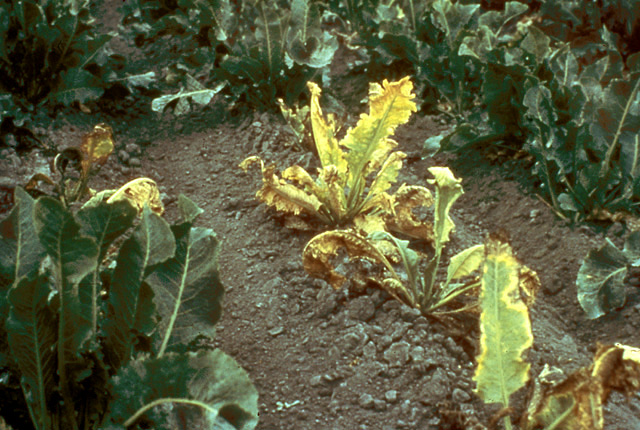
Brittle root | Horseradish
DISEASE: Brittle root
HOST: Horseradish (Armoracia rusticana)
PATHOGEN: Spiroplasma citri
SOURCE: D. Sherrod
DISEASE: Brittle root
HOST: Horseradish
Horseradish with discolored internal tissues. Healthy root segment (top right).
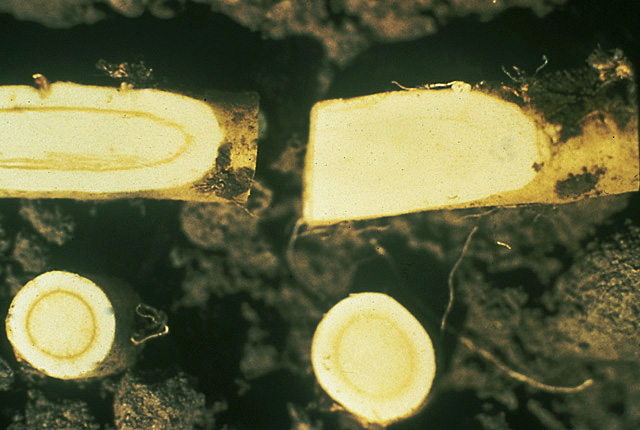
Brittle root | Horseradish
DISEASE: Brittle root
HOST: Horseradish (Armoracia rusticana)
PATHOGEN: Spiroplasma citri
SOURCE: J. Fletcher, M. Davis
DISEASE: Maize bushy stunt
HOST: Corn (Maize)
Maize with chlorotic leaf margins and reddening of tips and margins of older leaves.
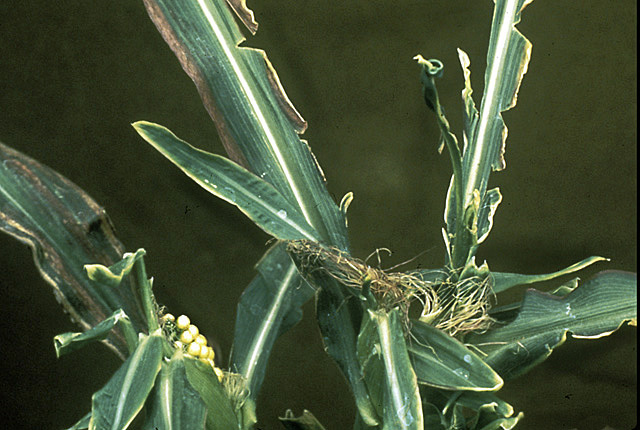
Maize bushy stunt | Corn (Maize)
DISEASE: Maize bushy stunt
HOST: Corn (Maize) (Zea mays)
PATHOGEN: 'Candidatus Phytoplasma asteris'
PATHOGEN SYNONYM: Phytoplasma Aster yellows group
SOURCE: L. Nault, M. Davis
DISEASE: Maize bushy stunt
HOST: Corn (Maize)
Late stage of disease.
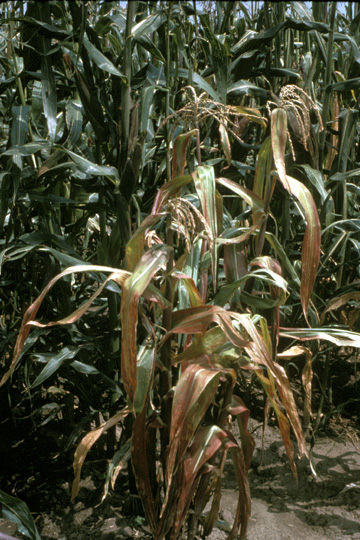
Maize bushy stunt | Corn (Maize)
DISEASE: Maize bushy stunt
HOST: Corn (Maize) (Zea mays)
PATHOGEN: 'Candidatus Phytoplasma asteris'
PATHOGEN SYNONYM: Phytoplasma Aster yellows group
SOURCE: R. Davis, M. Davis
DISEASE: Maize bushy stunt
HOST: Corn (Maize)
Dalbulus maidis, leafhopper vector of 'Candidatus Phytoplasma asteris', the cause of maize bushy stunt.
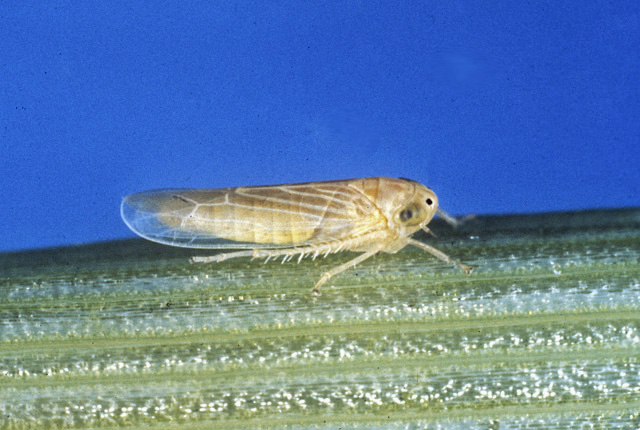
Maize bushy stunt | Corn (Maize)
DISEASE: Maize bushy stunt
HOST: Corn (Maize) (Zea mays)
PATHOGEN: 'Candidatus Phytoplasma asteris'
PATHOGEN SYNONYM: Phytoplasma Aster yellows group
SOURCE: L. Nault, M. Davis
DISEASE: Syringae leaf spot
HOST: Tomato
Leaves with brown necrotic lesions and chlorotic margins. Symptoms vary greatly among cultivars. Some have black or brown lesions with bright yellow, chlorotic areas and others do not have yellowing.
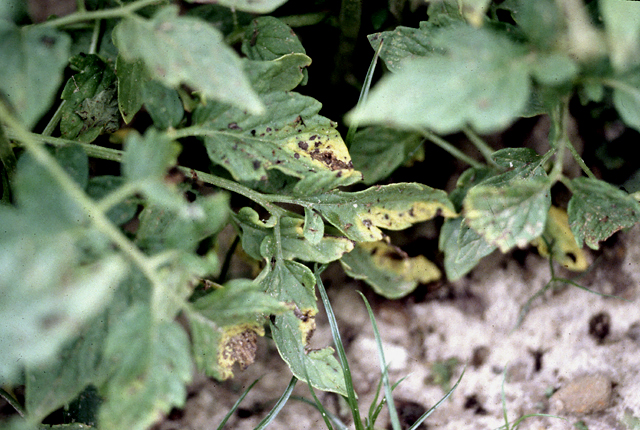
Syringae leaf spot | Tomato
DISEASE: Syringae leaf spot
HOST: Tomato (Lycopersicon esculentum)
PATHOGEN: Pseudomonas syringae pv. syringae
SOURCE: R. Gitaitis


